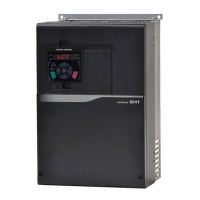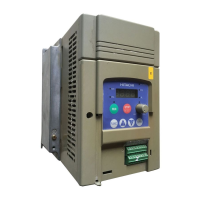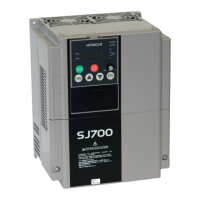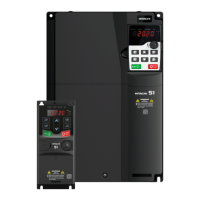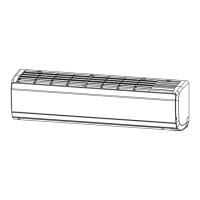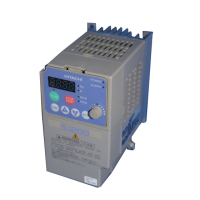Operation Setting and Examples of I/O Adjustment
■ Example for adjusting I/O terminals 3
3.11 Adjust the analog input (Ai3)
E.g.1) Adjust operation (The frequency reference is set by
[Ai3])
• The frequency reference range corresponding to the analog
input can be set arbitrarily.
◼ Parameter
Set the start frequency when the analog input is
[Cb-25]. Set the ratio (%) with the maximum frequency
as 100%.
Set the end frequency when the analog input is [Cb-26].
Set the ratio (%) with the maximum frequency as 100%.
Set the start voltage between the analog input -10V and
10V in the ratio (%) corresponding to -100% to 100%.
Set the end voltage between the analog input -10V and
10V in the ratio (%) corresponding to -100% to 100%.
E.g.2) Fine setting (The frequency reference is set by [Ai3] )
• If there is a deviation between the analog input and the
frequency reference in the above [Cb-23] to [Cb-26]
adjustment, fine adjustment is possible as follows.
At this time, set [Cb-23] to [Cb-26] to the default values as
possible. Typically, the gain / bias is adjusted within a few
percent.
■Parameter
Fine adjustment of the analog input 0 V point is
performed by adding the bias value to the frequency
reference. Set the ratio (%) with the Maximum
frequency as 100%. If the frequency reference is
negative, the rotation is reverse.
As shown above figure, fine adjustment is performed by
multiplying the slope of the reference line by the gain.
Set the ratio (%) based on the ( Maximum frequency /
analog input (10V) ) = 100%.
■ Example for adjusting I/O terminals 4
3.12 Input terminal chatter prevention
• Set a response time for input terminal to prevent from
a malfunction due to noise or/and chatter.
◼ Parameter
■ Example of adjusted I/O terminals 5
3.13 Output terminals stabilization
• Set the delay time to stabilize an output terminal from
a sensitive reaction of internal functions.
■Parameter
*1) SH1 Series do not have this terminal.
Operation of
the output
terminal 11
Operation of
the input
terminal 1
Operation of
the internal
functions
Forward rotation
Maximum frequency
100%
Analog input(%)
(10V=100%)
This range is
reverse
rotation
Reverse rotation
Maximum frequency
Forward rotation
Maximum frequency
Reverse rotation
Maximum frequency

